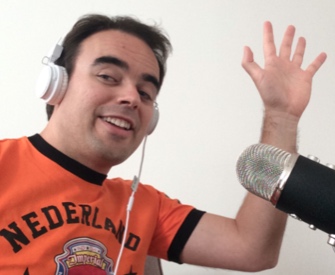The US EMBASSY speaks Dutch
- Ambassador Pete Hoekstra has Dutch roots, but how good is his Dutch?
- What are the favourite Dutch words at the United States Embassy in The Hague?
- What do they know about the Dutch language and the history of the US?
In three videos I asked the US ambassador to the Netherlands, Pete Hoekstra, his wife, Diane Johnson, and some of his colleagues from the US Embassy in the Netherlands questions like these.
CLICK HERE to subscribe to my Youtube channel
Pete Hoekstra, US Ambassador to the Netherlands from January 2018 till January 2021, was born in Groningen. That’s in the north of the Netherlands. After living in Friesland for 3 years, he and his family moved to Holland, Michigan.
There he met his wife, who has Dutch roots as well (!) because her grandparents came from the Netherlands to America.
That two originally Dutch people met in the United States is not strange after all. Because they weren’t the only ones who had moved from the Netherlands to a place abroad.
The Dutch in the United States – Emigration in the 50s and 60s
Between 1946 and 1969 about half a million Dutch citizens emigrated; that was about four percent of the total population. Canada and Australia in particular, but also the United States were popular destinations at the time.
After the Second World War, the people who left wanted a fresh start. Also, poverty wasn’t unusual in the Netherlands at the time. These new countries, which were ‘younger’ with more space and had fewer consequences from the war, offered new opportunities.
A United States Census counted around 5 million Americans as being wholly or partly of Dutch descent. (1)
Berend Botje …
In the video I ask about Berend Botje. And of course I asked this question because it was about America.
The complete text of this 19th century song is:
- Berend Botje ging uit varen (Berend Botje went out sailing)
- met zijn scheepje naar Zuidlaren (with his little ship to Zuidlaren)
- de weg was recht, de weg was krom (The road was straight, the road was crooked)
- nooit kwam Berend Botje weerom. (Berend Botje never came back.)
- Een, twee, drie, vier, vijf, zes, zeven (One, two, three, four, five, six, seven)
- waar is Berend Botje gebleven? (Where’s Berend Botje gone?)
- Hij is niet hier, hij is niet daar (He’s not here, he’s not there)
- hij is naar Amerika. (He’s gone to America.)
- Amerika, Amerika, (America, America,)
- driemaal in de rondte van je hopsasa. (three times around your ‘hopsasa’.)
Not only did I ask about this song because it is about America. I also wanted to know how good their knowledge of Dutch children’s songs and books was.
Scheepsbeschuitjes
In the video I ask people from the US Embassy about Scheepsbeschuitjes. Why? Not because these biscuits are really interesting.
It’s a kind of test of whether they can pronounce one of the most difficult sounds in Dutch.
The G-sound.
This notorious sound is the G-sound.
But first, it’s good to know that in Dutch, there are two ways of pronouncing the [g/ch]-sound.
The first is the one that is known for being difficult: the guttural sound, made at back of mouth, also called the ‘harde g’.
The second is called ‘zachte g’ (soft G) and this sound is voiceless or silent.
Another famous example of this difficult sound is in the name a city: Scheveningen
Scheveningse (scheve schoenen)
This word or phrase was used during WW II to detect German spies. Germans would pronounce Scheveningen (a town close to Den Haag) with the Dutch sound ‘Sh’.
In this video I asked what the favourite Dutch words at the United States Embassy in The Hague were.
Hoekstra’s wife came up with this word:
Gezellig
And she could not have chosen a more Dutch word. It is a typical Dutch word that doesn’t have a real translation, in any language.
Gezellig is a broad term that can be used in a lot of different situations.
Some examples:
- Hoe was het verjaardagsfeestje? Gezellig.
- How was your birthday party? Fun!
- Wat een gezellige huiskamer!
- That a cosy living room!
- Zullen we gezellig samen shoppen?
- Do you want to go for a nice day of shopping.
There are other typical Dutch words, that don’t have a proper translation.
Uitbuiken
Like ijsberen this is a verb. If we look at the literal meaning of the two parts of this verb we can translate this to ‘bellying out’.
Uitbuiken means that you relax after you have had a big meal. You just let your belly hang out!
This verb may well go along with the action of undoing the top button of your trousers, lying back in your favourite chair and saying:
Uitwaaien
Literally in English it would be: to blow out! This verb means going outside to be in the wind to clear your head. In most cases this happens by the sea, because here the wind blows the hardest.
There comes the monkey out of the sleeve – Dutch proverbs and expressions
A fun thing about learning Dutch is getting to know about new proverbs and expressions. Pete Hoekstra gives the example of the Dutch and their ‘lange tenen’. This literally means they have long toes.
Yes, the Dutch are long (tall) people, but this means they are sensitive people, or easily offended.
Another example is ‘Hoge bomen vangen veel wind’. ‘Tall trees catch a lot of wind’, which is the Dutch equivalent of getting all the flack.
In the video, there’s the expression there comes the monkey out of the sleeve (Daar komt de aap uit de mouw)
When it suddenly becomes clear what something is like, or when somebody’s true intention or character is finally apparent, it’s quite common to declare ‘Now the monkey comes out of the sleeve!’.
What do you know about the Dutch language and the history of the US?
The Dutch have quite a lot of history with the US. The Netherlands started building settlements on the American east coast in 1613. And these villages would grow into cities like New York. New York was founded by the Dutch as ‘New Amsterdam’.
And of course the first Dutch settlers didn’t speak English, they spoke Dutch. Gradually they came into contact with more English speakers and Dutch as a language disappeared.
Martin van Buren spoke Dutch
In the video I ask people from the US Embassy about Martin van Buren. Of course they know he was a president of the United States. What most of them didn’t know was that he was the only US president whose first language wasn’t English; it was Dutch.
More famous people also spoke Dutch:
- Audrey Hepburn
- And the brothers Van Halen.
Dutch in the English language
Thanks to the long history between the two countries, the Dutch language has made its way into the English language.
For example, there are some really typical American words, that appear to be Dutch:
Yankees
This comes from the Dutch name: Jan Kees. In the 17th century, the names Jan, Kees and Jan-Kees often occurred in the Netherlands, and also among the Dutch settlers in New Amsterdam. When the English took over, they used ‘Yankee’ to refer to the inhabitants (the Jan-Kees) of New England. At first this was used as a negative epithet, later the Americans adopted it as a Beggar’s name.
Boss – iceberg – dollar – candy – cookie
These words also sound like typical English words, but in fact, they have Dutch roots:
- Boss – Baas
- Iceberg – Ijsberg
- Dollar – Daalder
- Candy – Kandij
- Cookie – Koekje
In this blog you can read more examples.
Where’s America?
This might sound like a strange question.
But America is also the name of a little town in the south of the Netherlands in the province of Limburg.
And not only is there a town called America, there’s also another town called Amerika. Amerika in Drenthe, in the east of the Netherlands.
‘Dutch’ towns in America
This also works the other way around. Earlier we said that Mr. Hoekstra lived in Holland, Michigan. Other places found in the United States are Rotterdam and Amsterdam.
More Dutch villages in America are Kinderhook, Nassau, Watervliet, Barneveld and Guilderland.
In New York in particular you can see traces of Dutch history with places like:
- Harlem (Haarlem)
- Brooklyn (Breukelen)
- Flushing (Vlissingen)
- Coney Island (Konijnen Eiland).
Is there a Dutch side?
Because of his ‘Dutch side’, I asked Mr. Hoekstra whether he is indeed a bit Dutch, and what that means.
He said:
‘Ik ben heel zuinig’
And this is known to be one of the most typical Dutch traits. The Dutch are known for being economical or stingy.
Other typical stereotypical Dutch traits or characteristics are:
- The Dutch are tall, blue eyed, blond and wear wooden shoes (not true)
- The Dutch all do drugs (not true)
- The Dutch only think about soccer (a bit true)
- The Dutch travel with their caravan to France (some do).
(1) https://www.census.gov/history/pdf/ancestry.pdf

Bart de Pau
online Dutch teacher & founder of the Dutch Summer School & Dutch Winter School


